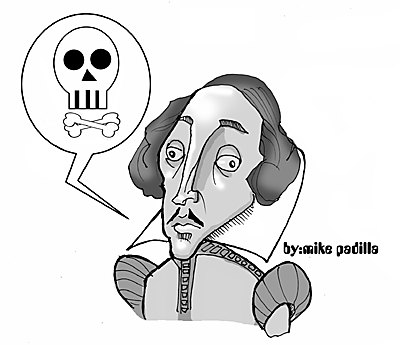


|

Illustration by Mike Padilla
|
|
Arizona Daily Wildcat
Tuesday, February 1, 2005
Print this
Things you always never wanted to know
Not all languages have alphabets. For example, Chinese characters do not compose an alphabet. Each character corresponds to a single or few syllables in Chinese.
Suicide occurs an unlucky 13 times in William Shakespeare's plays - in "Romeo and Juliet" in which the characters Romeo and Juliet commit suicide, in "Julius Caesar" in which both Cassius and Brutus die by consensual stabbing, as well as Brutus' wife Portia, in "Othello" in which Othello stabs himself, in "Hamlet" in which Ophelia is said to have "drowned" under suspicious circumstances, in "Macbeth" when Lady Macbeth dies and finally in "Antony and Cleopatra" in which suicide occurs an astounding five times (Mark Antony, Cleopatra, Charmian, Iras and Eros).
Whether Cleopatra was physically beautiful is subject to debate. Coins of the time depict a woman with a hooked nose and masculine features. However, her legendary first meetings with Julius Caesar and Mark Antony are still talked about. Both men fell in love with her and fought major wars for her that eventually cost them both their positions and their lives.
Queen Elizabeth I had reddish-gold hair, hazel eyes and a slightly hooked nose. Her looks were marred by her black teeth (from eating too much sugar). Elizabeth whitened her skin, as was the vogue in her time, with a mixture of egg, powdered eggshells, poppy seeds, white lead (a lethal ingredient), borax and alum. When her hair began to thin, she wore a huge spangled red wig. Toward the end of her life, Queen Elizabeth I refused to have a mirror in any of her rooms.
During the Napoleonic Wars, the poppy drew attention as the mysterious flower that bloomed over the graves of fallen soldiers.
Write a Letter to the Editor
|
|

|
